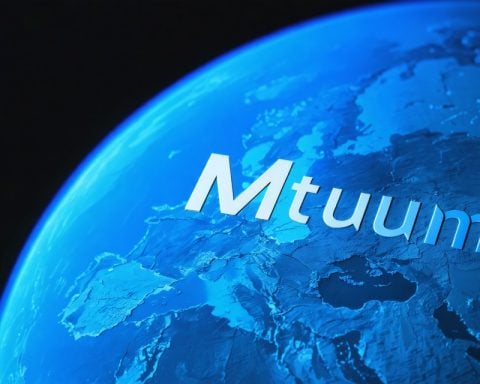Significant Milestone for Space Exploration
On December 9, 2024, Europe celebrated a remarkable achievement with the successful launch of the Sentinel-1C satellite from the Spaceport in French Guiana. This event marked the triumphant return of the Vega-C rocket, a vehicle that had faced challenges following a prior mission failure two years earlier.
Sentinel-1C is the third installment in the renowned Sentinel-1 series, designed to capture high-resolution radar imagery essential for monitoring environmental changes across the globe. The satellite plays a crucial role in supporting a wide range of applications, from environmental research to maritime traffic analysis, significantly enhancing scientists’ understanding of our planet.
This launch is part of the Copernicus Programme, which boasts an extensive network of 12 families of Sentinel satellites. Recognized as the largest Earth observation system worldwide, Copernicus provides crucial radar data that benefits various sectors, including disaster management, urban planning, and climate change studies.
The introduction of the Sentinel-1C satellite opens new avenues for Earth observation, promising advancements in monitoring technologies. Future missions within this framework are expected to further refine our ability to study and manage the environment effectively. The significance of this launch extends beyond regional borders, setting the stage for global research and sustainable environmental practices.
Space Exploration Gets a Boost with Sentinel-1C: What You Need to Know
On December 9, 2024, Europe celebrated a remarkable achievement with the successful launch of the Sentinel-1C satellite from the Spaceport in French Guiana. This event marked the triumphant return of the Vega-C rocket, a vehicle that had faced challenges following a prior mission failure two years earlier.
Features and Specifications of Sentinel-1C
Sentinel-1C is the third installment in the renowned Sentinel-1 series, designed to capture high-resolution radar imagery essential for monitoring environmental changes across the globe. Some key specifications include:
– Operating Frequency: The satellite operates in the C-band, utilizing synthetic aperture radar (SAR) technology to provide all-weather, day-and-night imaging.
– Resolution: It offers a resolution of up to 5 meters, enabling detailed observation of Earth’s surface.
– Coverage: Capable of revisiting any part of the Earth every 6 days, Sentinel-1C enhances the monitoring capacity of the previous satellites in the series.
Use Cases and Applications
The satellite plays a crucial role in various applications:
– Environmental Monitoring: Continuously gathers data on land subsidence, deforestation, and flood monitoring, contributing to climate research.
– Maritime Surveillance: Provides critical information on ship movements and coastal changes, aiding in maritime traffic analysis.
– Disaster Management: Assists in assessing damage from natural disasters like earthquakes, floods, and landslides, helping to inform response efforts.
Innovations and Trends
The introduction of Sentinel-1C is indicative of ongoing innovations in Earth observation technologies. The Copernicus Programme, which Sentinel-1C is a part of, is continuously evolving:
– Integration with AI: Future missions plan to integrate artificial intelligence to analyze vast datasets more efficiently, enhancing predictive capabilities and response times in crisis management.
– Collaboration with Global Networks: Copernicus collaborates with international bodies like NASA and ESA, promoting a synergistic approach to global environmental monitoring.
Limitations and Challenges
While the launch is a significant milestone, several challenges loom on the horizon:
– Budget Constraints: As with many space programs, budget limitations may affect the scale and scope of future missions.
– Technological Hurdles: Ensuring the longevity and reliability of satellites in challenging space conditions poses ongoing challenges for engineers.
Pricing and Market Analysis
The cost of deploying the Sentinel-1C satellite is indicative of the broader trends in satellite technology investments. The total funding for the Copernicus Programme has been estimated at over €10 billion since its inception, signifying the high stakes involved in Earth observation initiatives.
Looking Ahead: Predictions for Earth Observation
Experts predict a continued investment in Earth observation capabilities as climate change and natural disasters become increasingly critical global issues. Innovations like small satellite technology and enhanced ground systems are expected to increase the granularity and frequency of environmental data collection.
As Sentinel-1C begins its operational life, the insights it provides will be invaluable for researchers and policymakers working to address pressing environmental challenges.
For more information on Copernicus and its initiatives, visit the Copernicus website.









